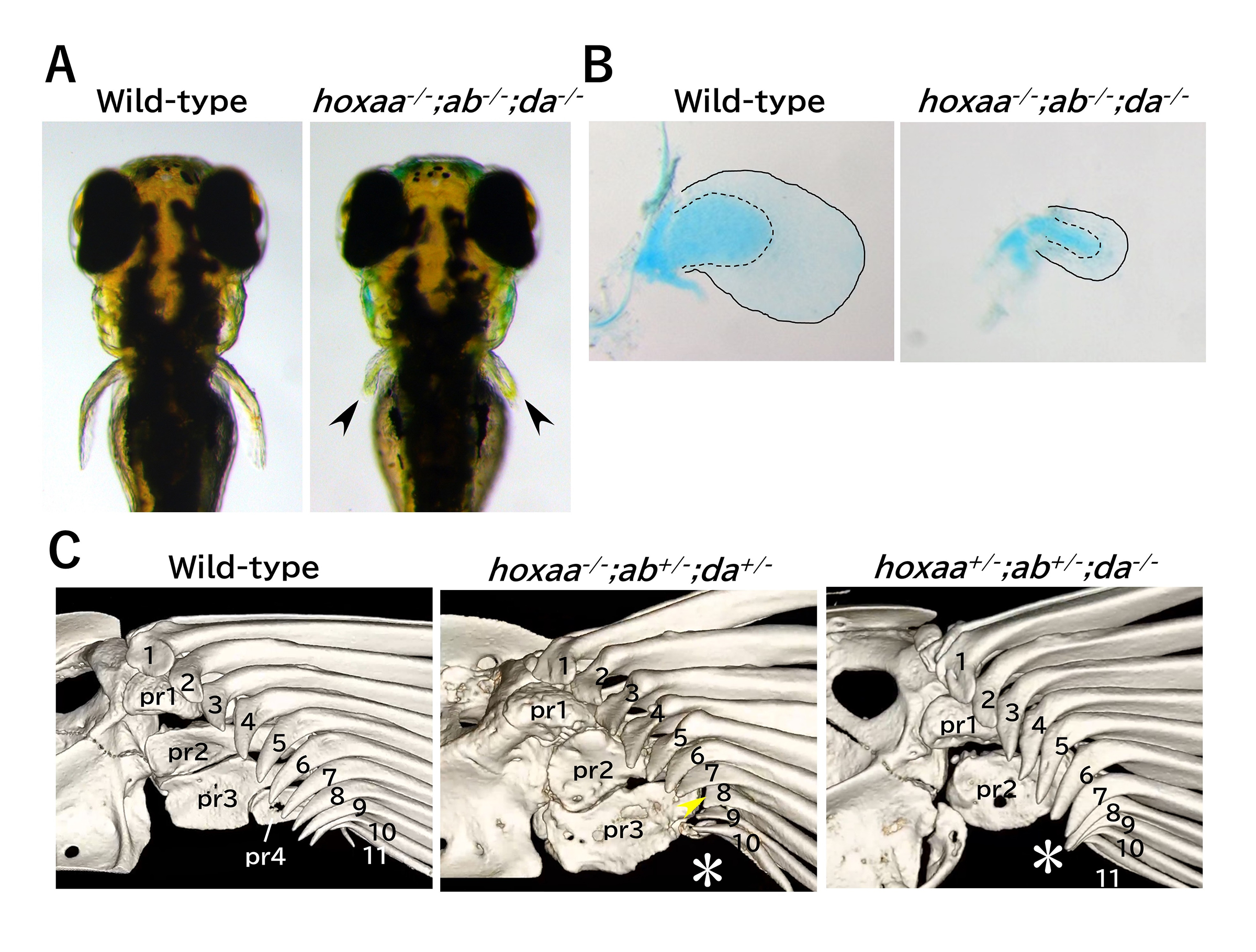The Hox patterning system underlying the pectoral fin formation was established before the divergence of ray-finned and lobe-finned fishes
Technical Section / Phenotype Research Center / Cell Architecture Laboratory
The functional roles of zebrafish HoxA– and HoxD-related clusters in the pectoral fin development
Mizuki Ishizaka, Akiteru Maeno, Hidemichi Nakazawa,, Renka Fujii, Sae Oikawa, Taisei Tani, Haruna Kanno, Rina Koita, and Akinori Kawamura
Scientific Reports (2024) 14, 23602 DOI:10.1038/s41598-024-74134-9
Although the pectoral fins of ray-finned fishes and the forelimbs of tetrapods differ in morphology and function, they share a homology with a common evolutionary origin. Comparing the developmental mechanisms of these structures is expected to provide insights into the evolution of vertebrate appendage formation. Analysis of knockout mice has shown that the deletion of HoxA and HoxD clusters, including Hox 9-13 genes results in significant shortening of the forelimbs. Similarly, deleting hox13 genes in HoxA and HoxD-related clusters of zebrafish also led to morphological abnormalities in the pectoral fins. However, the role of hox genes other than hox13 in pectoral fin formation remains unknown. In this study, we generated multiple zebrafish mutants with combinatorial deletions of HoxA and HoxD-related clusters and found that the pectoral fins in these mutants were significantly shortened, mirroring the abnormalities observed in the knockout mice. Furthermore, detailed analysis of the pectoral fins of surviving adult hox mutant zebrafish using micro-CT scans revealed morphological abnormalities in regions of the pectoral fins that are homologous to the forelimbs. These results further support the hypothesis that the formation of pectoral fins utilizing Hox genes in HoxA and HoxD clusters was established in common ancestors before the divergence of ray-finned and lobe-finned fishes.
This research was conducted by a group led by Associate Professor Akinori Kawamura of the Division of Life Science, Graduate School of Science and Engineering, Saitama University, with support from NIG-JOINT (38A2019, 7A2020, 66A2021, 18A2022, 31A2023).

Figure: (A) Significant shortening of the pectoral fin in zebrafish hoxaa;ab;da cluster-delted mutants. 3-day post-fertilization. (B) Stained chondrocytes of the dissected pectoral fin (5-day). (C) Abnormal pectoral fin morphology in hox mutant adults revealed by micro-CT scan analysis.















